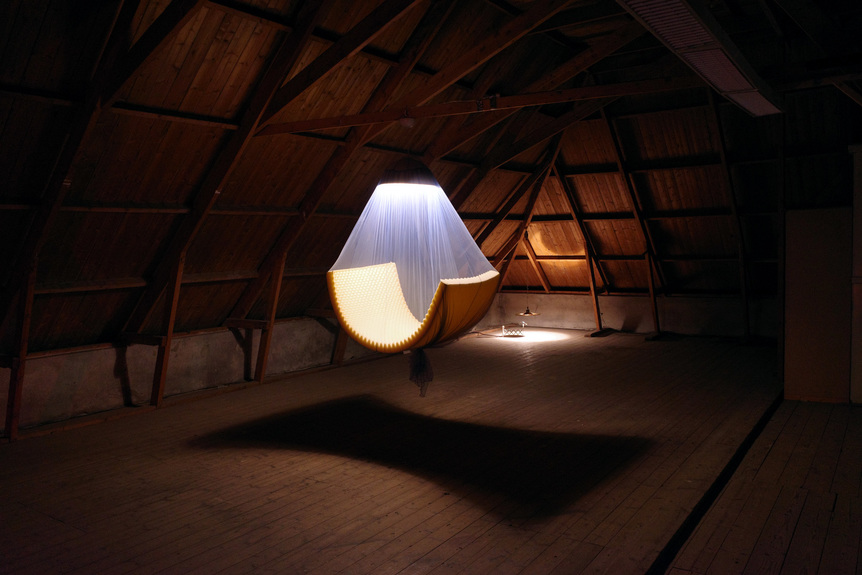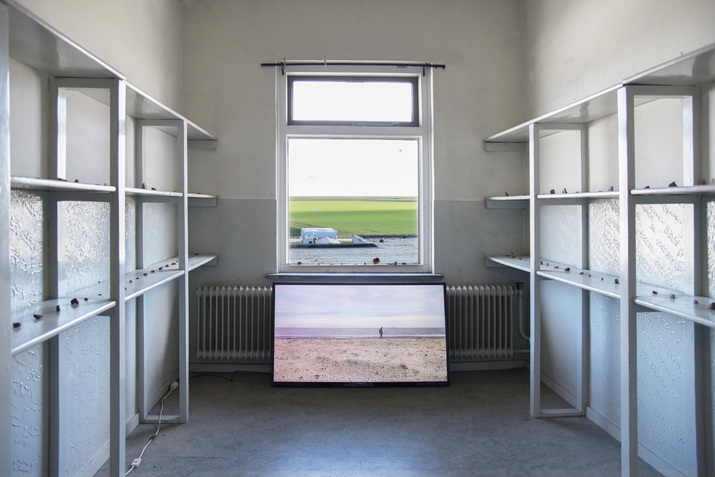
R
E
V N
E
X
T
TIANYI ZHENG, Fall asleep on the freeway from The Freeway to a New Planet, 2020–21, still from video with sound and color: 5 min 4 sec. All images courtesy the artist.
“It is the victor who writes the history and counts the dead.”
—Sir William Francis Butler
“Furthermore, some ideas can be creative even if they don’t work at all.
They can be thought of as ‘brilliant failures’.”
—John Kounios
Failure is a part of life; many articles, self-help books, and TED talks expound on the valuable lessons it can teach us so that we may better ourselves and grow. Most discourse on failure addresses its role in our personal life—when things don’t go according to our intentions. But between the lines a potential conflict emerges which goes beyond the purely personal: a friction between the expectations or values of the individual versus those of society. Relativity is failure’s most important aspect: What or whom is being failed? Who perceives the failure, and based on what standards? Compared to other, more lucrative endeavors, the very fact of making art can be considered if not a failure then at least not likely to guarantee success by the metrics of wealth and job security. Still, art—and artists—survive, and can serve to critique society’s mainstream ideals, prompting deeper reflections around such notions as beauty and worth, and the very act of evaluating itself. Art and failure share the power of making us question our lives, values, and the validity or facticity of our dreams.
Before analyzing how the concept of failure is explored in the works of artist Tianyi Zheng, a few remarks are needed to better frame this essay’s perspective. Firstly, failure’s relativity has a temporal-historical dimension. Secondly, failure as a concept depends on an understanding of functionality, following the importance that our society attributes to productive things and practical solutions. Within the encounter of time and function, two terms arise as generative notions for understanding failure: obsolescence and uselessness. Obsolescence denotes that something is no longer useful, such as an out-of-date technology that has been replaced by more efficient means. To be obsolete is to have failed the test of time. Uselessness is the inability to achieve a desired outcome—it has no valid purpose or it does not work.
Tianyi Zheng’s multimedia practice is based on the discovery and salvaging of obsolete and useless objects and materials. Some of them are found in second-hand shops, others are fragments of other artworks (her own, or by other artists). The found objects are colored by the wistful endurance of things that are no longer wanted or considered useful, while the artwork fragments reveal inexorable distances in interpretation due to the displacement from their contextual origins. Zheng often produces composite installations, whose multiple parts can evolve over time and be displayed in different configurations and settings. In her installation The Freeway to a New Planet (2020–21), the work Nightmare capsule consists of a foam mattress that is encapsulated in a net and suspended from a ceiling lamp, which turns on and off at irregular intervals. All of these old objects, unwanted individually, coalesce into a new and transformed whole. The sense of failure bound to their obsolescence is broken with this move. Nightmare Capsule shows the tenacity of meaning beyond function, generating reflections on the passing of time, and the precarity of our endeavors. This work accompanies Fall asleep on the freeway, a moving-image installation involving fragments of director Andrei Tarkovsky’s science-fiction masterpiece Solaris (1972), set to Zheng’s original soundtrack and subtitles that allude to the film’s story of a troubled space mission. In one of its presentations, Fall asleep takes the form of a series of diapositives. The projector is so outdated that it often needs to be turned off, in order to cool down. The analogue and not-completely-functioning equipment obliges the viewer to approach the work differently: its availability is circumscribed, negotiated between the installation’s physical presence and operational unreliability. The projector is there, but it doesn’t always show the artwork in its totality.
It is through this dysfunction that Zheng resists society’s imperative of functionality, a resistance that is even more clearly conceived in her performances, which leave aside the character of obsolescence typical of her installations in favor of futility and uselessness. This is exemplified by a series of performances titled Nothing Exercises, executed during the Bierumer School exhibition “Let’s not go back to normal” (2020–21) and also documented in video. For example, Nothing Exercise 2 (2020) shows Zheng attempting to catch the wind using a plastic mattress bag. She succeeds in capturing it in the moment when the plastic is suddenly engulfed by the strong breeze, but this repeated act achieves nothing: there is no reason to keep the air sealed in the bag, hence it is eventually freed. The artist’s gestures are carried out in vain, yet she persists, engendering reflections about the human condition: is there meaning and worth to seemingly useless and Sisyphean acts?
Zheng’s approach invokes a subtle shift: meaning and function cease to coincide. In playing with notions of obsolescence and uselessness, the artist helps us see that utility is just one criterion for evaluating tools, endeavors, and ourselves; it should not be passively accepted as the solely valid yardstick. And just as objects can have meaning beyond their functionality, human worth should not be calculated according to our economic productivity and compliance with the values and power structures in society that dictate how we should behave and think. The discards of society contain this great revelatory strength; one just needs to be willing to see it.
Elisabetta Cuccaro is the second-place winner of ArtAsiaPacific’s 2021 Young Writers Contest. She is an interdisciplinary artist, curator and writer based between the Netherlands and Italy.
To read more of ArtAsiaPacific’s articles, visit our Digital Library.














